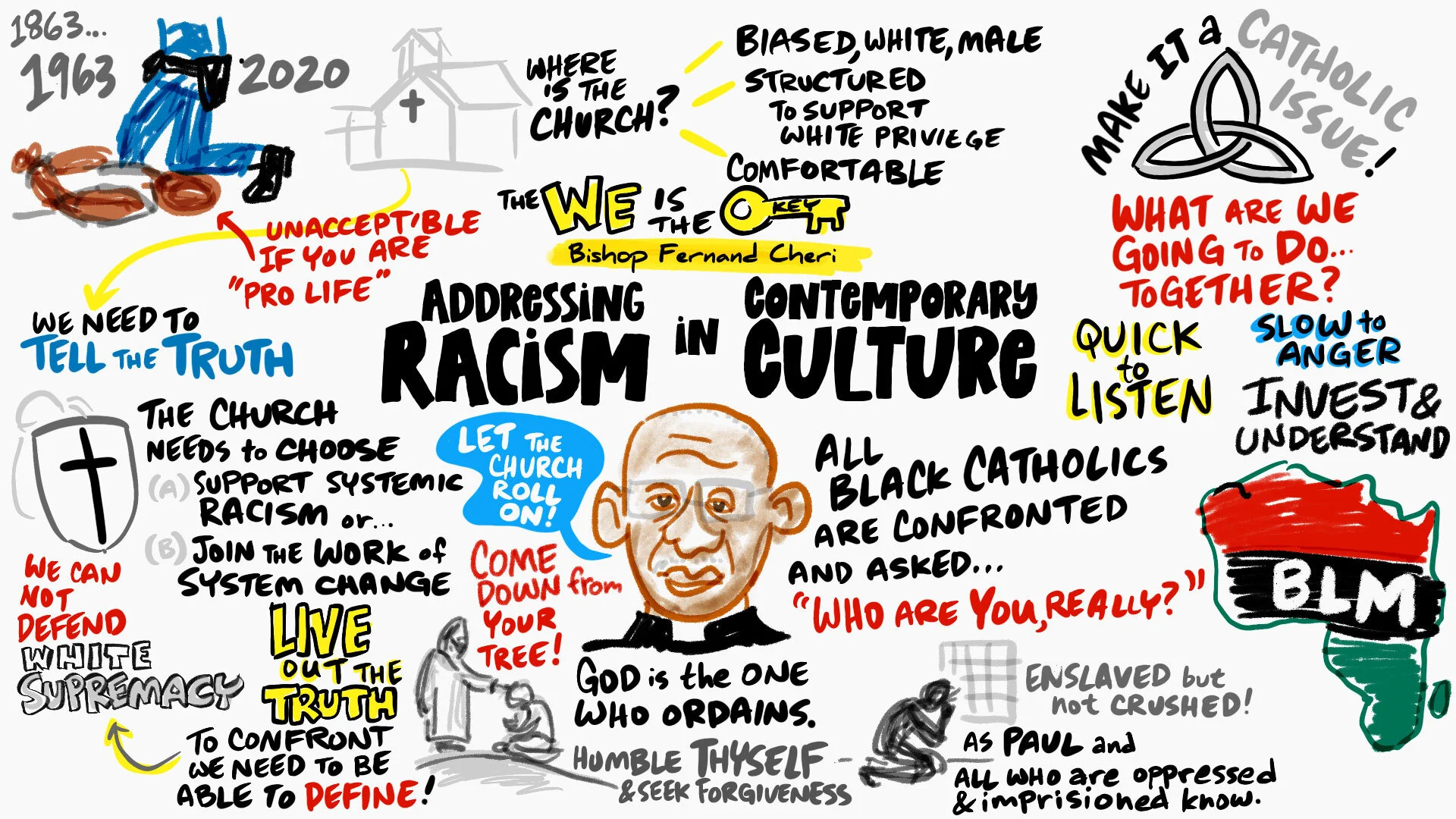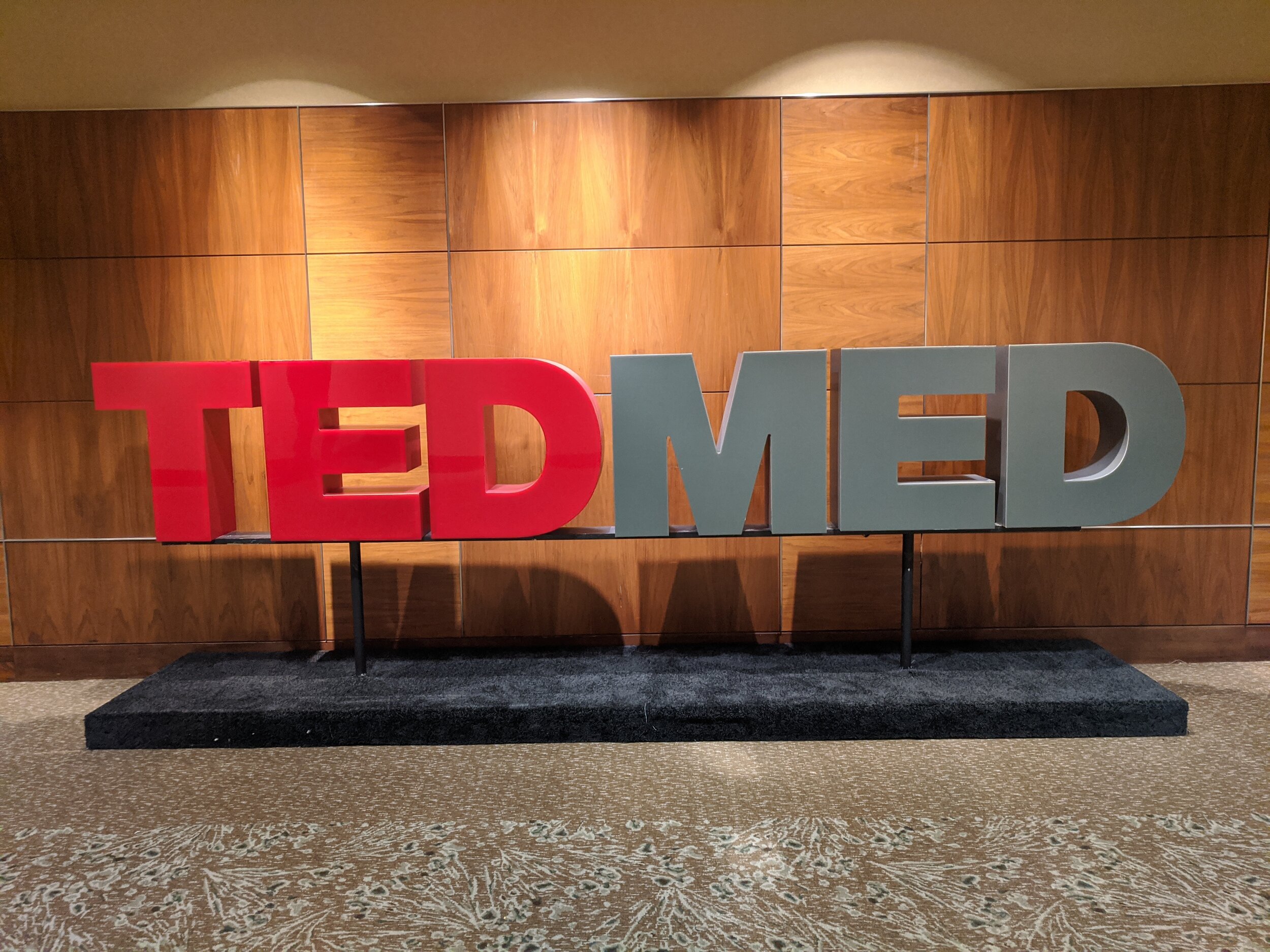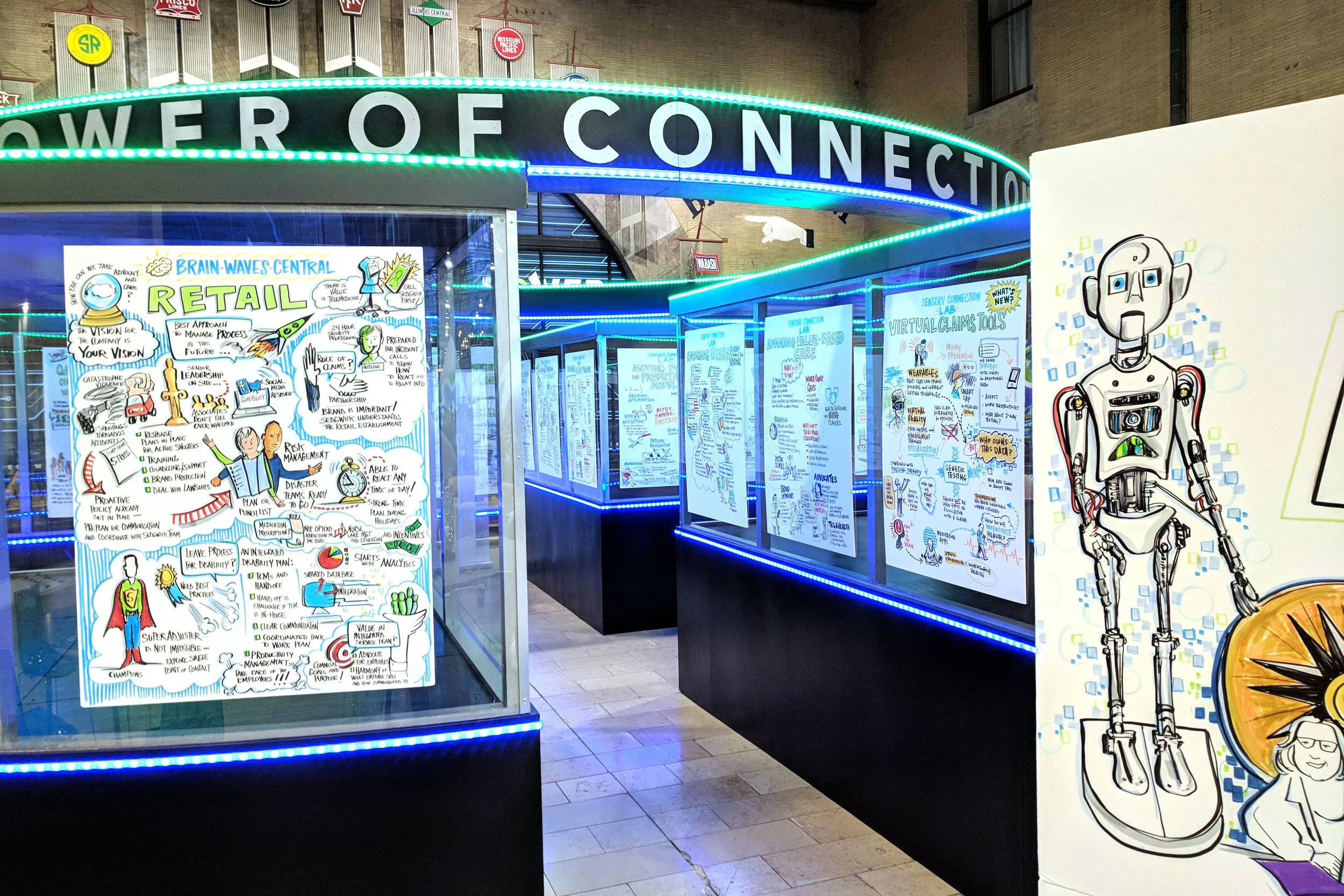Vanderbilt Creative Practice Bootcamp at the Curb Center
/On Septermber 2nd, 2011, I went with Peter Durand and Perrin Ireland to The Curb Center at Vanderbilt University to support Peter as he offered a Creative Practice Bootcamp on graphic faciliation. I also had the honor of scribing for Parker Gates, designer and faciliator for the design studio at e+ CancerCare, located in Nashville, TN. And finally, I even got to sit in as a participant on a session by Eric Booth, teaching artist, actor, author, and international arts learning consultant, on Habits of Creative Problem Solving.
How to Unleash Your Creativity
/By Mariette DiChristina
I, too, have found the creative process to be teachable and trackable. |
Meeting on the Right Side of the Brain
/Congrats to Leslie Marquard and Catalyst Ranch on leading the piece. Thanks for bringing "right-brained thinking" to a "left-brained" world. (Actually, working in creative environments and using multiple learning modalities inspires whole-brain thinking.)
|
Quieting the Demons and Giving Art a Voice
/
|
How I Live: A study of an ethnographic self-study
/She documents almost everything she does or creates on her website and has just jumped into audio podcasting, too.
I needed to clean the apartment. Instead of cleaning the apartment, I took pictures of the mess in the apartment. It's a colorful mess. A muffin tin holding plastic bags of beads and some jewelry tools. Haven't worked on jewelry in a long time, so this has been sitting out for a long time. Da guys on the shelf next to the movie chair, owl, creature from the black lagoon, Stripus McGreenley the sock monkey, water bottle, more Mr. Sketch markers, Good magazine. |
Embrace the Edge -- or Perish
/ The periphery of today's global business environment is where innovation potential is the highest. Ignore it at your peril.
The periphery of today's global business environment is where innovation potential is the highest. Ignore it at your peril.
Article by John Hagel and John Seely Brown
Edges are increasingly significant as the global business environment speeds up. In a world of accelerating change, what's born on the edge transforms the core with breathtaking speed. A few short years ago, both India and China were marginal players in the global economy. Now they are central players. Not long ago, the Internet was a specialized communication platform for scientists. Now it's a center for commerce and advertising.
|
Making Art Work @ Catalyst Ranch
/
It may be years since most white-collar businesspeople went to art class, but a new corporate training philosophy might change the way Chicago does business.
The West Loop’s Catalyst Ranch teamed up with the Art Institute to develop an arts-based corporate training philosophy unlike any other.
Aptly named Art-Work, the program utilizes the museum’s artwork as a medium for teaching communication and other business-related skills.
Catalyst Ranch, which specializes in hosting eccentric off-site meetings and events for various companies, developed Art-Work in conjunction with the Art Institute as an alternative means to the typical corporate teambuilding activities. The day-long sessions use the museum’s vast collections to illustrate and teach business concepts, and also utilize the creative working environment inside Catalyst Ranch to further develop ideas, according to Bobbie Soeder, explorer/matchmaker (aka vice president of sales and marketing) at Catalyst Ranch.
“Arts-based learning isn’t a new concept,” Soeder said. “But we feel that it’s so timely right now with today’s business climate and the push for creativity and innovation.”
The first half of the session takes place at the Art Institute, where co-workers view hand-selected artworks and discuss how some of the various elements can be related to the business world. Art-Work sessions are co-taught by Sarah Alvarez, the assistant director of Adult Programs in Museum Education at the Art Institute, and a corporate facilitator contracted by Catalyst Ranch. Alvarez brings her knowledge of art history and visual learning to each session while a corporate facilitator is chosen based on their specialized knowledge in one of four categories: communication, creativity and innovation, diversity and inclusion and team and leadership development.
The “Art-Work” training program combines art and corporate business.
“I’ll get a group of people in front of a work of art and I’ll ask every one of them to say the first thing they see,” Alvarez said. “Nine times out of 10 you’ve got almost everybody saying something different. It’s this reminder that we all see the world slightly differently and art is a really great way to have those kinds of discussions about how we see it.”
The second half of the session takes place back at Catalyst Ranch where the group reviews the concepts discussed at the museum and works with Alvarez and the corporate facilitator to make solid connections between the art and their particular business issues.
Facilitators are contracted based on their area of specialization, and Catalyst Ranch chooses from a handful of those known as experts in corporate training. If the staff is having difficulty with communication, Alvarez and the corporate facilitator will choose artwork they feel will help the team fine-tune their communication skills, she said. If cooperation, diversity or other sensitive issues are plaguing the group, the co-facilitators can select works from the museum that will create an environment conducive for healthy discussion about the topic.
“The art is beautiful and it’s incredible but there are skills to be refined, discovered [and] honed that apply back to the daily way that group will work with each other,” Soeder said. “It causes people to feel safer because they’re directing their conflict to the art rather than to each other.”
Aside from simply being a means for learning age-old corporate lessons, Art-Work is designed to help employers keep their staffs thinking in creative, innovative ways. By having both an art expert and a corporate guru on-hand, clients are exposed to a dichotomy they might not otherwise have thought to explore, Alvarez said.
“Our driving goal is to engage audiences that think they don’t have time ... for a museum, to realize that, maybe, they do,” she said. “It’s not about coming in with a degree in art history or being able to paint something or other. It goes beyond that.”
Though no Art-Work sessions have been scheduled yet, both the Art Institute and Catalyst Ranch are hopeful based on the history of satisfied clients they’ve each seen in the past. The Art Institute has worked with other businesses, teachers and medical professionals in arts-related programs, and Catalyst Ranch has hosted a slue of creative meetings and events for corporations across the country.
Amy Shannon said she was one of the first to bring her staff to an off-site meeting at Catalyst Ranch when it opened five years ago. Though it may take corporate-types a bit of time to feel comfortable in an arts environment, Shannon believes the Art-Work program has great potential for teambuilding.
“In some ways it puts people on a level playing field because I suspect there’s not too many [people] out there that are in fact themselves experts in the arts,” Shannon said. “It enables people to come at a conversation from a bit of a different slant than what they might normally.”
Why You Should Include a Joker in Every Brainstorming Session
/The Fast Interview: John Morreall on the link between humor and innovation, why authoritarian bosses fear humor, and the funniest CEO in America.
From: FastCompany.com | November 2007 | By: Kermit Pattison
Humor makes us think more flexibly. People who think funny do better on creativity studies. To put it really simply, humor loosens up your brain to think of more possibilities and be more open to the wild and wacky ones. There is a guy at the State University of New York at Buffalo named Roger Firestien who has a center for the study of creativity. When he teaches brainstorming, he says you should put a joker in the group -- somebody who will come up with preposterous ideas. Very often that will stimulate people to come up with ideas that will work. Let me give you an example. A bunch of paint engineers were moaning and bitching about how hard it is to get paint off a house. read full interview >> |
Nancy Andreasen: On Creative People
/"They are driven," notes Andreasen "by a sense that they haven't gotten it quite right."
This sense of disquiet comes from a profound acknowledgment. "Most find that creativity is a gift. If you've got something that is a gift, you don't feel that it belongs to you. That's what keeps creative people humble."
Blurb: As reviewed by Kevin Kelly
/With and without kids, he has traveled the globe (Afghanistan, Vietnam, China, Europe); he has launched publications (The Whole Earth Catalog, Wired); and, he continues to redefine how we think about technology and biology (Out of Control, Encyclopedia of Life, The Long Now Foundation ). And, in case you haven't guessed, he's one of my heroes.
He is also an avid self-publisher of personal projects.
Check out his reviews of the various on-line in the blooming print-on-demand market.
My recommendation for the best personal color book printer is Blurb. Blurb produces color books very similar to the iPhoto books you can order from Apple. Using iPhoto Books is slightly easier than using Blurb's software, particularly if all your photos happen to already be in iPhoto, but it works well enough. The idea is that you can drag images (photos or illustrations) into template book pages, add text or captions where you want to, then hit a button and have the finished book mailed to you. (all these systems work with PCs and Macs) The results from both Apple and Blurb are marvelous. In fact, these books are astounding. That's because they both use the same back-room engine, the HP Indigo 5000 (as do the other color book makers like Snapfish and MyPublisher). The Indigio is essentially a high-speed, high-quality liquid-toner printer that will print your photo book several pages across. Blurb Photobook Blurb's How to Make a Book |
Godbey Works: Big Idea Part Deux
/My column Look and Feel is just that. Stories about how things look and feel — usually with a business twist. I rant, I rave, I give advice and most importantly, I look at things and react to them. After spending thirty years in the field of the visual arts I have assumed this as my calling. It's what I get hired to do. I love it and am very passionate about it.
|
"Benefits & Pitfalls of Metaphors & Syntopical Readings" or "Why We Have a Library"
/Books sure are pretty.
And, they make people look smart.
But the books are a vital part of our tool set for helping teams think faster, better and more creativelier [spell check did NOT like that word!].
Here are some resources giving the background of how other organizations use metaphorical reading, research outside their subject areas, and their own libraries as tools and methods for innovation in business.
Syntopical Reading… Intelligent Dialog
Mortimor Adler developed the term and method called Syntopical Reading in How To Read A Book [rbtfBook]. The idea is to read many books at the same time - on a given subject - and aggressively dialoging with the authors. First, you see things this way that otherwise would not be revealed. In addition, it is possible to read a set of books, that together, bring information and insight to a subject that none of them, singularly, cover. by Matt Taylor
The Syntopicon as an Instrument of Liberal Education
The Syntopicon serves the end of liberal education to the extent that it facilitates the reading of the great books and, beyond that, the study and teaching of them. To make the nature of this educational contribution clear, it is necessary to distinguish between the integral and the syntopical reading of great books. by Mortimer Adler. Ph.D.
The Fruitful Flaws of Strategy Metaphors
Harvard Business Review | It’s tempting to draw business lessons from other disciplines—warfare, biology, music. But most managers do it badly. Instead of being seduced by the similarities between business and another field, you need to look for places where the metaphor breaks down. by Tihamér von Ghyczy
Unearth Growth by Digging in the Dirt
Fast Company | Everything you need to know about innovation is growing (and dying) in a garden near you. So forget balanced scorecards, six sigma and SWOT analysis and read this instead. by Richard Watson
You Are Responsible for Your Child’s Creativity
/From GodbeyWorks:
 Back to School
Back to School
by Diana Long, Ed.D.
The summer flies by. Already the Back-to-School ads are dominating television and newspaper advertisements. Memorial Day gives way to the 4th of July in a blink of an eye. Labor Day is the official mindset end of summer and many kids go back into the classroom well before the holiday.
GodbeyWorks is a company that is promoting and yes, screaming for the public to pay attention to development activities that promote entrepreneurship, development of creative jobs, design and value added products and services. The recent “white paper” by Vision Shared, Culture, Creativity and Innovation, West Virginia in the New Economy, recommends actions to government, education and business to encourage such development. Taking the responsibility down to a personal level, I gathered thoughts on this question, “How do parents encourage the creative development of their own children?” more >>
Creativity Pure and Applied in Social Enterprise
/
|











































